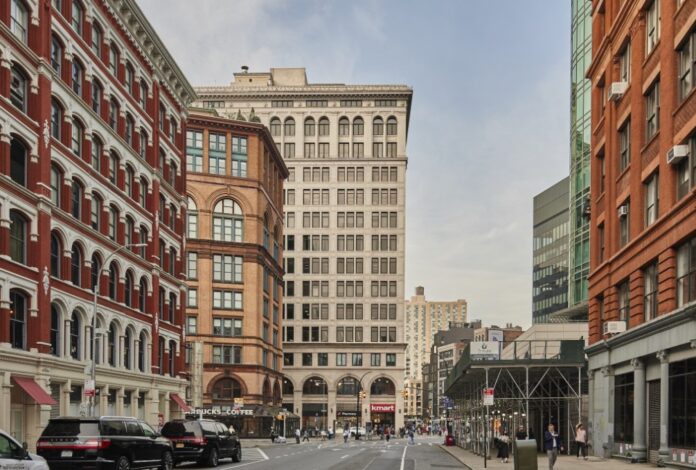
The real estate industry has had to evolve to meet changing consumer demands and preferences. The shift to remote work has disrupted many aspects in the last few years, and real estate has not been spared.
Remote work continues to redefine normalcy. While this shift is significantly associated with the COVID-19 global pandemic, it is not expected to slow down in the foreseeable future.
Long after the viral menace is forgotten, remote work will still be the norm, a concept that has impacted real estate in many ways. Herein, we’ll highlight some of the most notable impacts the rise of remote work has had on real estate.
The Location Factor
Location, Location, Location! While this is still the number one rule in real estate, it has gained new flexibility. Today, consumers are not tied to living closest to their workplaces. Remote working means you don’t have to commute to and from work daily, meaning proximity to work is not a huge consideration.
The location flexibility has caused a massive shift in demand. Suburban and rural areas have seen a spike in property demand owing to their more favorable prices than their urban counterparts. Expensive urban centers’ leading edge is proximity to workplaces, which is now not a huge check since you can work from home. More satellite towns continue to pop up with cheaper properties while existing ones are revived with higher populations than in previous years. Check this website and you’ll see how satellite towns are packed with diverse properties matching the changing consumer preferences.

Living Standards
Friendlier property prices are not the only check driving more people away from the urban centers. The cost of living in the suburban and rural areas is also much better. This is not to mention the quality of life, especially with access to nature and more space. More space means the property offers features like larger yards.
This facilitates a friendlier outdoor experience, especially for families, making it a notable check. The features help remote workers enjoy a better work-life balance. The satellite towns provide a middle ground between urban convenience and rural tranquility, which is more attractive to remote workers.
Property Features
When buying or renting a property, remote workers have certain minimums they need to address. The property is no longer defined by its aesthetic appeal and functional aspects not designed to make remote work productive. High-speed internet connectivity, stable energy supply, dedicated home office spaces, and other amenities that make remote working more manageable are becoming the standards.
These features facilitate comfortable and more productive remote working conditions, which weren’t previously seen as vital aspects of a home. Additional elements like home gyms are also gaining traction as remote workers look for solutions to realize better work-life balance.
New Property Types
Co-living spaces and tiny homes are quickly shaping the modern real estate landscape. These new property types are designed to offer more efficient, affordable, and eco-friendly homes. Co-living spaces entail living with biologically unrelated individuals in the same dwelling unit.
The approach is designed to bring people with shared values together, which makes it easier to manage remote work and remain productive in the long run. This is a massive win since not all individuals cope well working alone remotely. You get to be in a supportive community with like-minded people, all while minimizing the cost of living.
Tiny homes are just as the name suggests: small. These tiny houses offer simplicity, founded on a minimalist basis. This includes their environmental impacts. You can find tiny homes that solely depend on renewable solar energy, use minimal water, and don’t take up considerable resources to construct. Such houses offer sufficient space for a remote worker without costing a fortune, a trend quickly catching on, especially considering the minimal carbon footprint many people strive to achieve.

Office Space Demand
Office spaces are still essential. Nonetheless, the demand is dropping as more companies realize the financial benefits of facilitating remote work. Organizations are continuously downsizing the office space needed. Others have even moved to a remote-first model and shifted their operations away from urban centers.
This shift has significantly affected commercial real estate, forcing price drops and property conversions. As the remote work trend continues, traditional office needs will keep dwindling, which means commercial real estate will have to adapt and offer alternatives like shared offices or co-living spaces to survive.
Price Changes
Commercial real estate is the apparent subject of price drops. Nonetheless, the impact extends to residential rentals, especially in urban settings. Demand for rental apartments continues to drop as more people favor suburban and rural areas. The price naturally has to drop in urban areas, but it is quickly rising in satellite towns.
Suburban and rural areas have experienced growing competition. This has led to an increase in real estate prices for raw land and developed properties. Besides remote work and location flexibility, the competition is also driven by the desire for more people to own homes rather than rent, considering financial security. The high competition and binding wars have led to faster property sales.
Check listings today and mark the properties, then give it a few weeks and revisit the pages. You’ll notice new listings while only a few, if any, of the previous properties will still be there.

Infrastructure
The real estate industry has always had a significant impact on infrastructure development. The developments have hit a new stride as remote work takes center stage. This is a chance for real estate investors to capitalize on new and diverse opportunities. Growing demand for schools, medical institutions, shopping centers, better roads, and water, internet, and electricity connectivity in rural and suburban areas is revolutionizing the industry.
Infrastructure developments are no longer concentrated in urban settings since demand quickly rises in suburban/rural areas as more people move to these areas. This trend will only increase as remote work continues to be the norm, resulting in a growing rural/suburban population.
Remote working may have initially seemed to only be disruptive in managing daily living activities, but it is revolutionizing virtually every industry. The long-term impact on real estate is still unclear as the industry evolves to meet the changing landscape. Nonetheless, impacts such as those highlighted above are apparent and continue to shape the real industry’s future.











